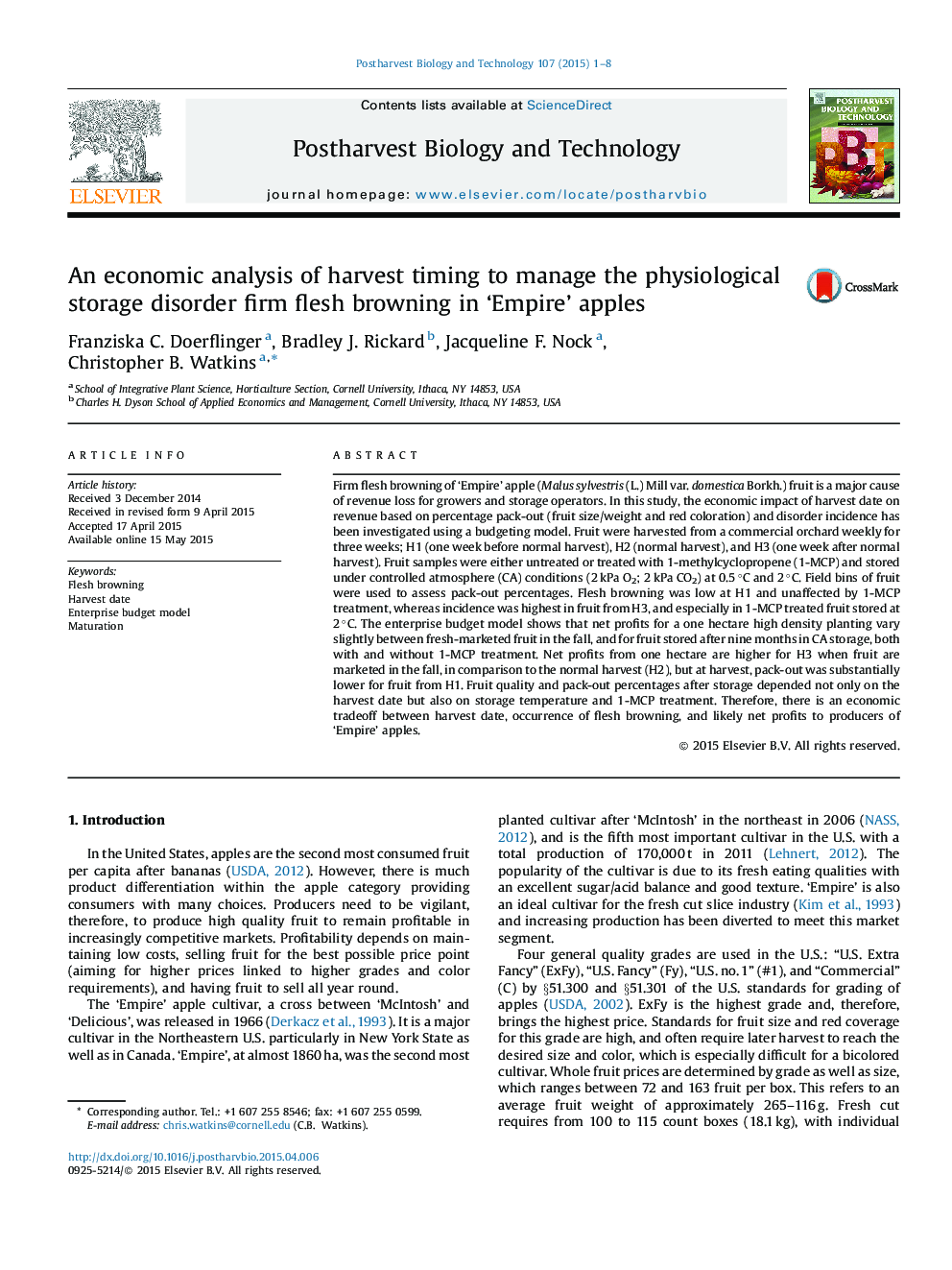| کد مقاله | کد نشریه | سال انتشار | مقاله انگلیسی | نسخه تمام متن |
|---|---|---|---|---|
| 4517983 | 1624987 | 2015 | 8 صفحه PDF | دانلود رایگان |

• ‘Empire’ apples were harvested at weekly intervals for three weeks.
• Flesh browning incidence was highest in late harvested fruit.
• Browning incidence was increased by 1-MCP and storage at 2 °C compared with 0.5 °C.
• Early harvests had smaller and less red colored fruit but less browning.
• Net profits vary depending on length of storage.
Firm flesh browning of ‘Empire’ apple (Malus sylvestris (L.) Mill var. domestica Borkh.) fruit is a major cause of revenue loss for growers and storage operators. In this study, the economic impact of harvest date on revenue based on percentage pack-out (fruit size/weight and red coloration) and disorder incidence has been investigated using a budgeting model. Fruit were harvested from a commercial orchard weekly for three weeks; H1 (one week before normal harvest), H2 (normal harvest), and H3 (one week after normal harvest). Fruit samples were either untreated or treated with 1-methylcyclopropene (1-MCP) and stored under controlled atmosphere (CA) conditions (2 kPa O2; 2 kPa CO2) at 0.5 °C and 2 °C. Field bins of fruit were used to assess pack-out percentages. Flesh browning was low at H1 and unaffected by 1-MCP treatment, whereas incidence was highest in fruit from H3, and especially in 1-MCP treated fruit stored at 2 °C. The enterprise budget model shows that net profits for a one hectare high density planting vary slightly between fresh-marketed fruit in the fall, and for fruit stored after nine months in CA storage, both with and without 1-MCP treatment. Net profits from one hectare are higher for H3 when fruit are marketed in the fall, in comparison to the normal harvest (H2), but at harvest, pack-out was substantially lower for fruit from H1. Fruit quality and pack-out percentages after storage depended not only on the harvest date but also on storage temperature and 1-MCP treatment. Therefore, there is an economic tradeoff between harvest date, occurrence of flesh browning, and likely net profits to producers of ‘Empire’ apples.
Journal: Postharvest Biology and Technology - Volume 107, September 2015, Pages 1–8